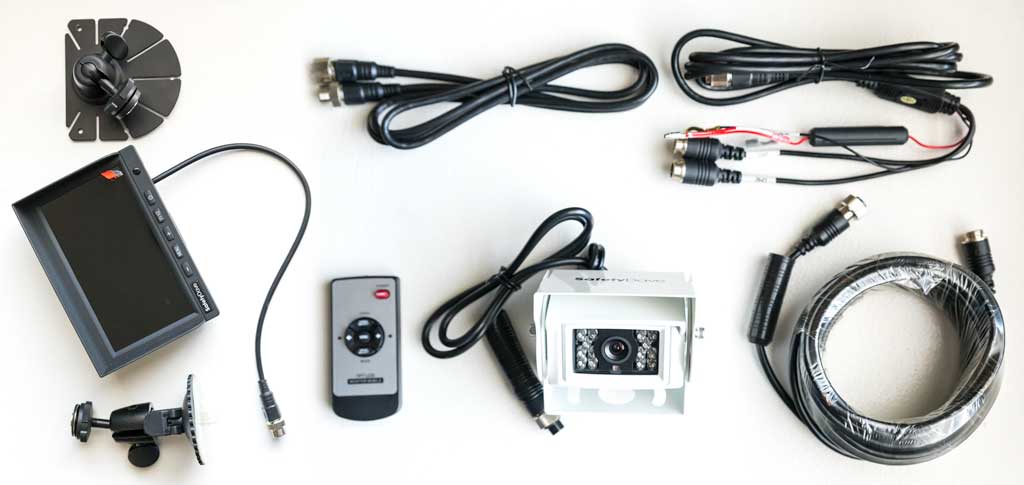
After fitting a custom aluminium canopy to my Nissan Patrol Ute, I knew that I would need to fit a rear vision system to it sooner or later.
After Mez had a recent incident on the tracks at Ormeau in South East Queensland with an unsuspecting 6” round Eucalypt (that may or may not have been harmed in the process!), it ended up being sooner, rather than later.
With the canopy only being as wide as my standard tray, the side mirrors still did their job. But knowing exactly what was behind me at all times proved a little bit harder.
It was time to do some research into a reversing camera and monitor.
Table of Contents
WHAT IS A REAR VISION SYSTEM?
A rear vision system consists of a reverse camera, mounting brackets, wiring and a display.
A reversing camera, which is also known as a rear-view or back up camera is installed at the rear of the vehicle. It aids in the reversing of the vehicle and to help avoid blind spots. This is especially important in car parks, in tight situations off-road and when hitching up a trailer.



Note the LED’s around the camera lens to help at night.
An added bonus is the extra safety it provides, especially if you have small children.
Depending upon your requirements, the display can be windscreen, dash-mounted or even replace the factory rear-view mirror.
CHOOSING THE RIGHT REVERSE CAMERA AND MONITOR
There are so many different options available for both the type of camera and monitor to choose from.
I had a couple of criteria that needed to be met:
- Both the camera and monitor had to have a 100% duty cycle
- The camera had to be waterproof
- The camera had to be robust
- It had to be easy to install as I was doing it myself (and I am no auto electrical expert!)
- A good warranty
After a bit of Googling and watching a few Youtube clips, I jumped onto the Safety Dave website, clicked on their Contact Us button and enquired about a reverse camera and monitor to suit my above requirements.
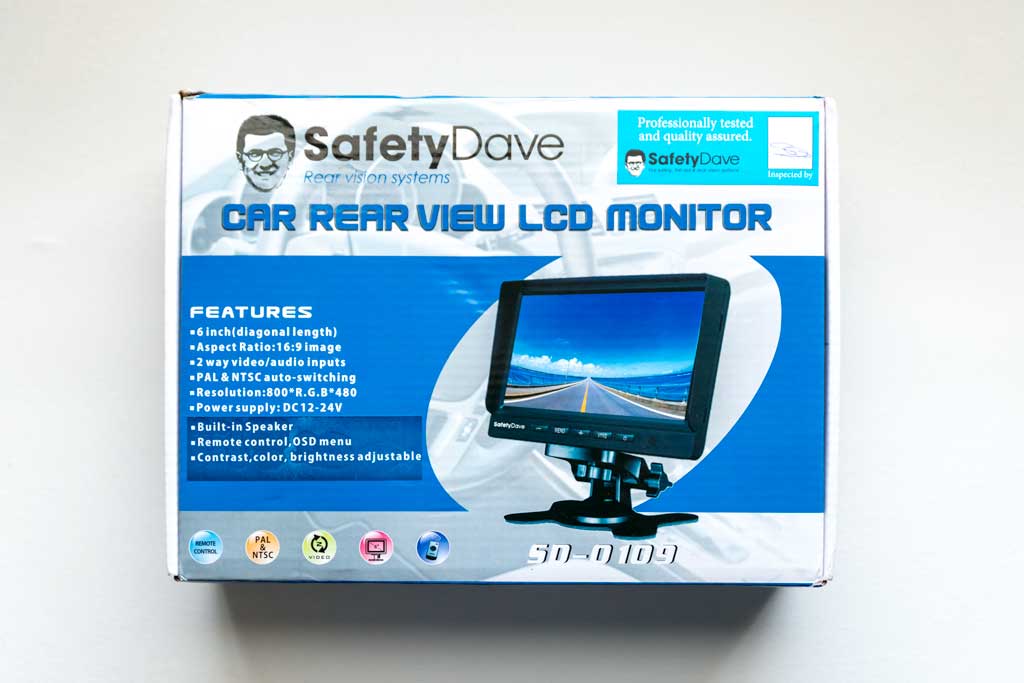


The SD-0109. Sounds like it could also be the name of the next Terminator!
A couple of hours later my phone rings and one of the Safety Dave sales reps is on the line. We went through what type of vehicle I have, where it would be used and where would it be mounted. He was asking all the right questions.
I told him what I was planning to do and where I intended to go i.e. Long distance, off-road remote travel. Suggestions were made and the positive and negative implications of different options discussed.
After our conversation, I felt confident that what was being suggested to me was going to suit my needs perfectly. As a bonus, they even threw in an extra 1m long monitor extension cable. This would ensure I wouldn’t have any issues with extending the wiring up to my roof lining. As it played out, I’m glad he did.
WHAT’S IN THE REVERSE CAMERA KIT?
So, I ended up purchasing the SD 5.8” Sunshield Rear Vision Package which includes:
- SD 5.8” 2 channel monitor
- SD Square Reverse Camera (IP69 rated)
- 1 x Dash Mount and 1 x Suction Mount
- Cables and Wiring Loom
- Remote Control
- Protective Bag
- Installation Instructions
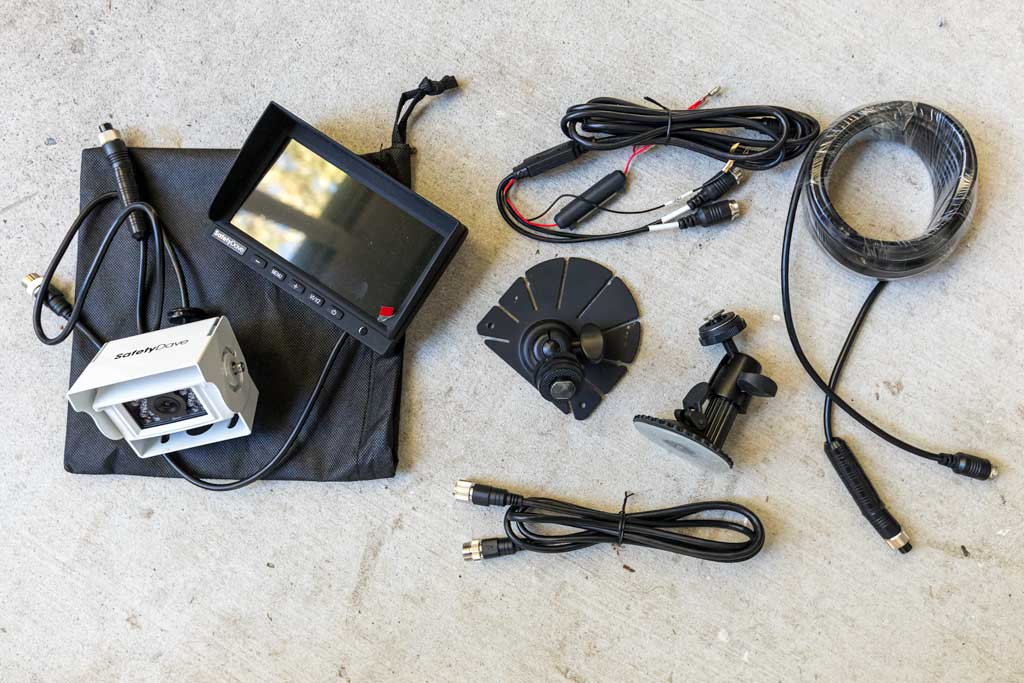


The camera is a waterproof unit that also includes:
- 18-night vision LED’s
- a 92˚ viewing angle
- an anti-glare hood
- 5G shock rating
An added bonus is that it also has audio functionality. This allows you to hear if something is behind your vehicle. Especially good when hitching up a trailer. To match my canopy, I chose the powder-coated white camera and brackets.
The monitor features a 5.8” screen that can view up to two camera feeds. Just perfect if you tow a van or trailer with a separate camera.



The entire kit comes with a full 2 year replacement warranty.
Early the following week, my package arrived and then it was time to work out the best way to mount everything up. Where to run the cables, where was I going to get power from, could I actually mount the monitor where I wanted to, did I have all the correct tools and equipment to do the job and so on.
THE SEVEN P’s
I’m sure most of you know what I’m talking about here. If not, I suggest a quick Google. I wanted to make sure I was following the first three P’s so I didn’t end up with the last three P’s.
As I said earlier, one of my prerequisites was that the kit must be easy to install. After watching a few more Youtube clips I was nearly ready to tackle the install on my own ute. But first, I needed to go out and buy a few things.
My biggest purchase was the step-drill or step-saw. Having never needed one before, but always wanting one, now was the perfect opportunity to add a bright and shiny new tool to my arsenal.
Not wanting to rely on tek screws to hold my camera in place over thousands and thousands of kilometres of corrugations, I opted to use 316 stainless steel M5 bolts, washers and nyloc nuts. Nyloc again for the added security on rough roads.



won’t shake loose over the corrugations.
The monitor was to be mounted in place of the original rear-view mirror. I was hoping that I would be able to modify the supplied dash mount to hang from the roof of my ute.
Unfortunately, after many test fits and trying to work my way around it, I decided that I would utilise a spare RAM ball mount that I had lying around at home as my mounting point. This meant that I had to purchase a RAM ball with a T-slot to suit the back of the monitor and a RAM arm to allow the monitor to be positioned just how I wanted it.
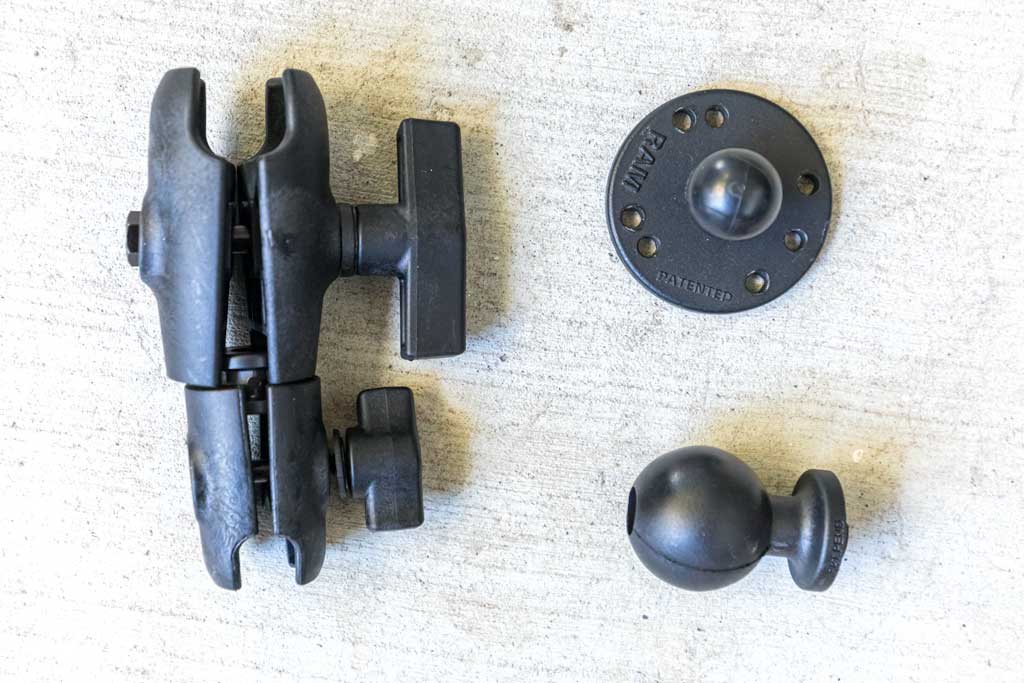


Other items required for the install that I didn’t already have at home or in my ute spares kit was 10mm split tube convolute and a large cable gland.
TOOLS REQUIRED FOR REVERSE CAMERA INSTALL
Other than the step-drill, there were no other specialist tools required for the install. Here is what I used:
- 18V cordless drill
- Various drill bits
- Countersinking bits
- Philips head screwdriver
- Small flat-bladed screwdriver
- Soldering iron and solder
- Wire cutters
- Wire strippers
- Ring and open-ended spanners
- Electrical tape
- Zip ties
- Self-adhesive zip tie mounts
- Rubber grommets
- Sikaflex
- A multimeter or test light
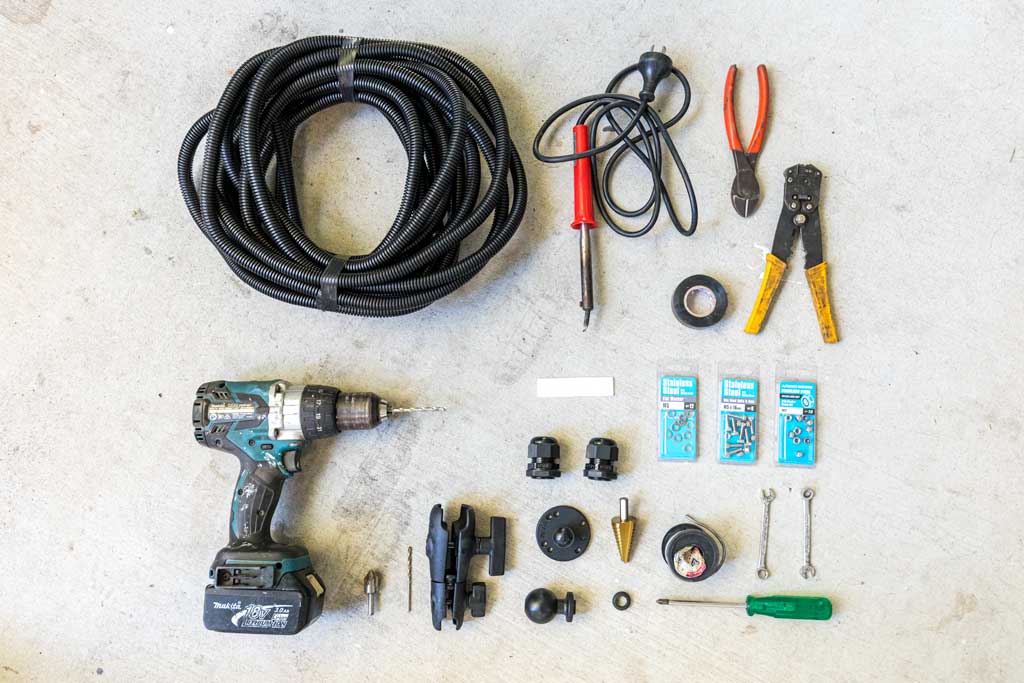


With all the parts, tools and equipment ready to go, I was sure that I had crossed off proper planning and preparation.
Now to the fun part.
REVERSE CAMERA INSTALLATION
Firstly, before you start drilling any holes or pulling your dash apart it, is to bench test the entire system.
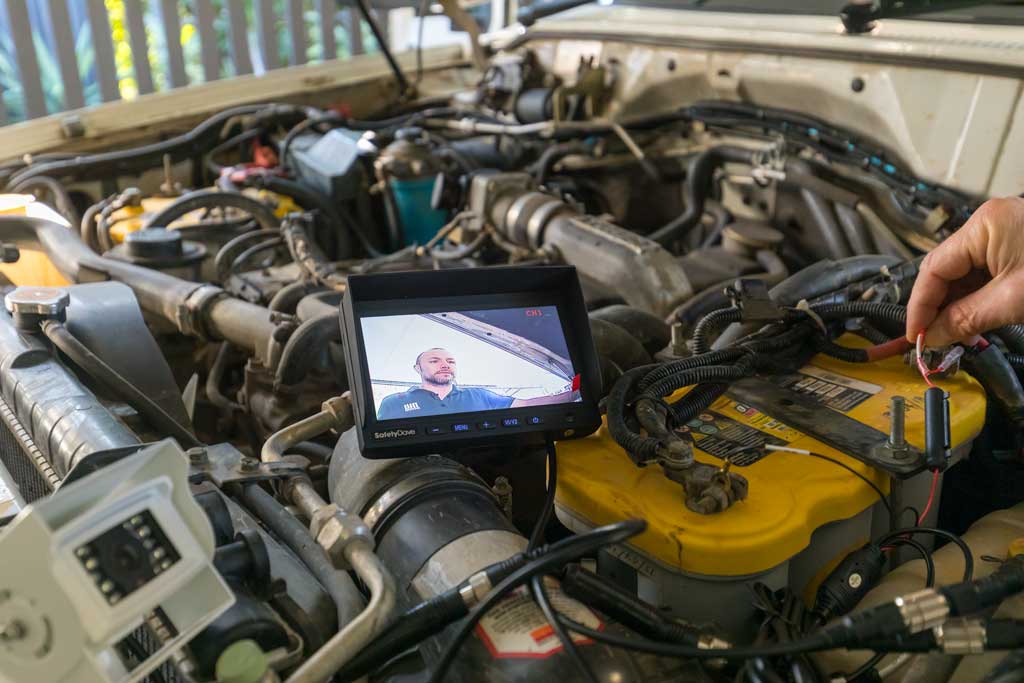


So, whatever parts you’re going to use in the final install, set it all up first and then power the system up.
For me, that meant setting everything up in the engine bay before attaching the power wires to the battery. Fingers crossed there won’t be any problems and an image will appear on your monitor. When it does, you are now good to go.
Working from the back of the vehicle to the front, the first part of my install was definitely the most daunting. I was more than just a teeny bit nervous at having to drill a 20mm hole in the back of my canopy.
The old catch-cry from my cabinetmaking days rang loudly in my ears. “M.T.C.O.” Measure Twice Cut Once, or in this instance, MTDO – Measure Twice Drill Once.



After finding my centre point, I used an old set of dividers that haven’t seen the light of day since 1997 to scribe a 20mm circle. This was to act as a guide for when I fired up the step-drill. But before the step-drill, a smaller pilot hole was drilled first.



Call me cautious, but the last thing I wanted was the back of my canopy resembling a block of Swiss cheese!
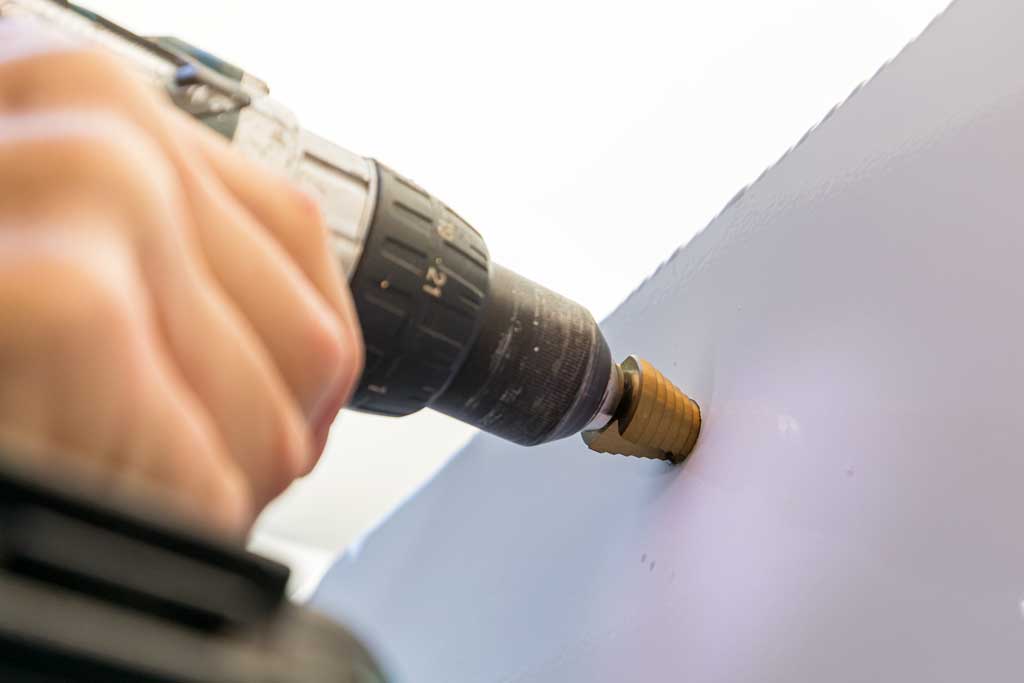


With the big hole drilled, it’s time to locate the camera and bracket in the preferred position and mark out the four holes for the bracket mounting bolts.
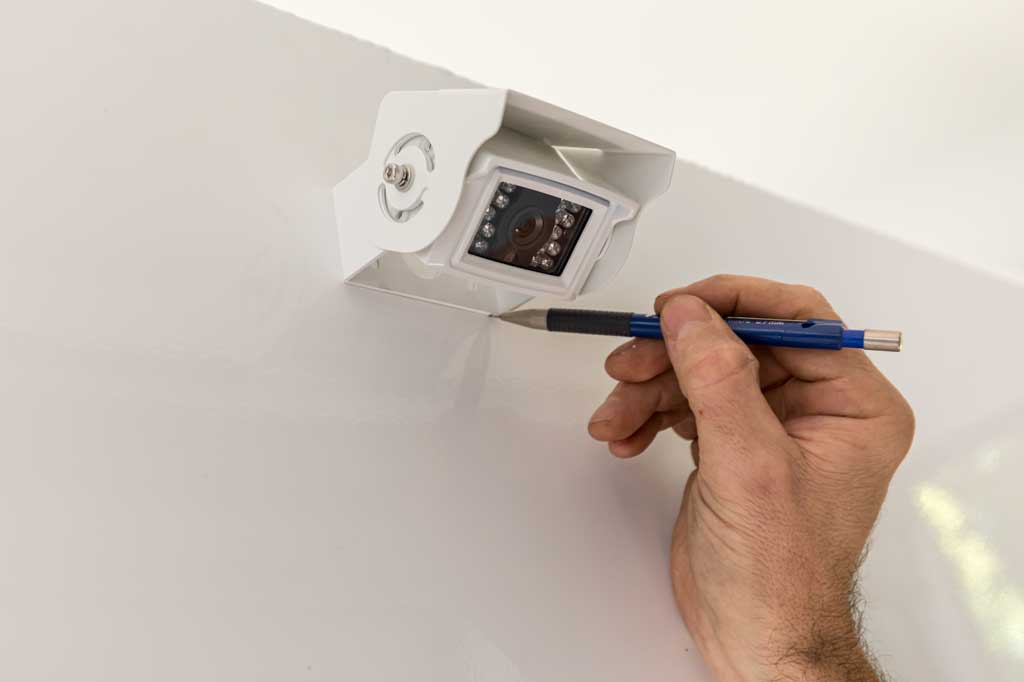


Seeing that I was using M5 bolts to fix the bracket to the canopy, I used a 5.5mm drill bit. After drilling the four holes, use a larger drill bit and lightly spin it between your fingers. This will de-burr the holes. Do this on both the outside and in.
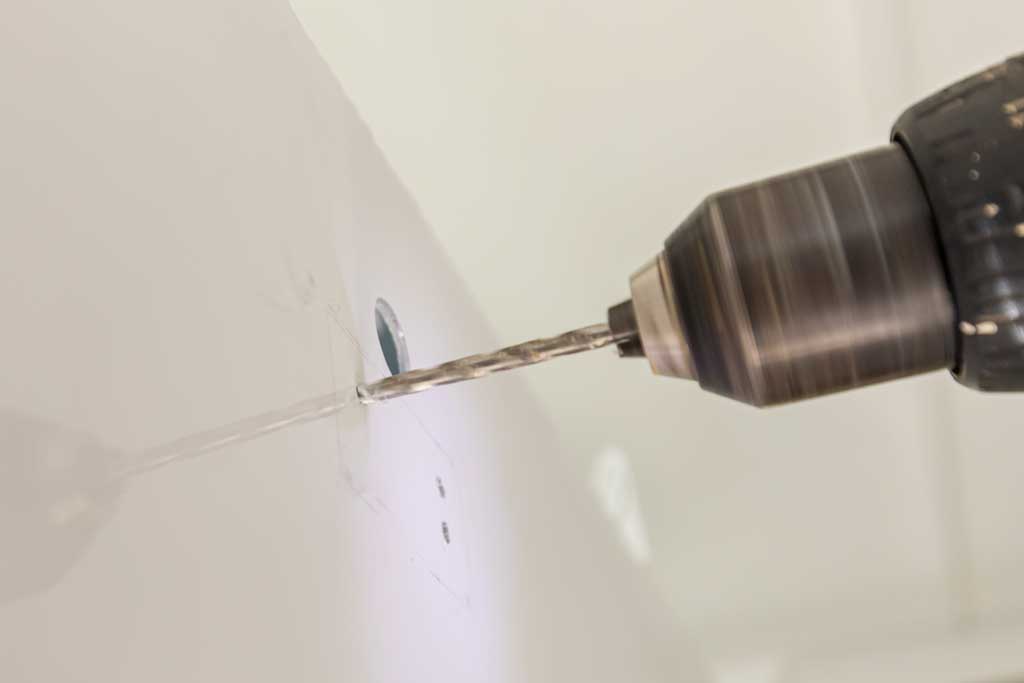


Remove the camera from the mounting bracket and fix the bracket to the canopy. Ensure the bracket is level before tightening. The last thing you want is a wonky, lopsided image on your monitor.
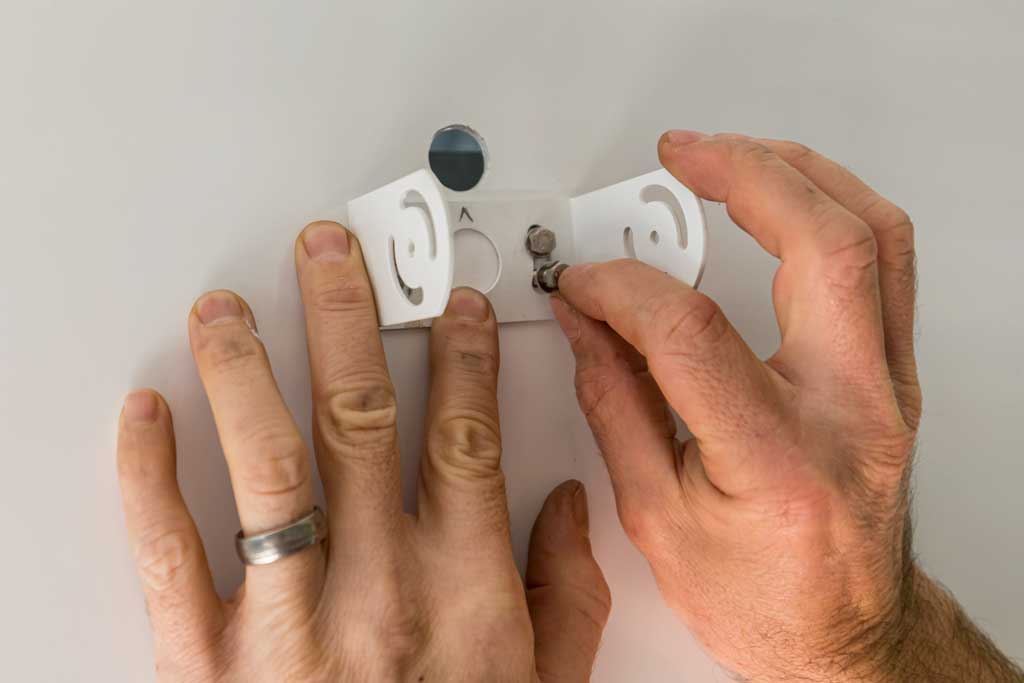


WIRING UP YOUR REVERSE CAMERA
With the bracket securely mounted, feed the camera cable through the 20mm hole and fit the cable grommet. Fit the camera and anti-glare hood using a single Allen headed bolt.
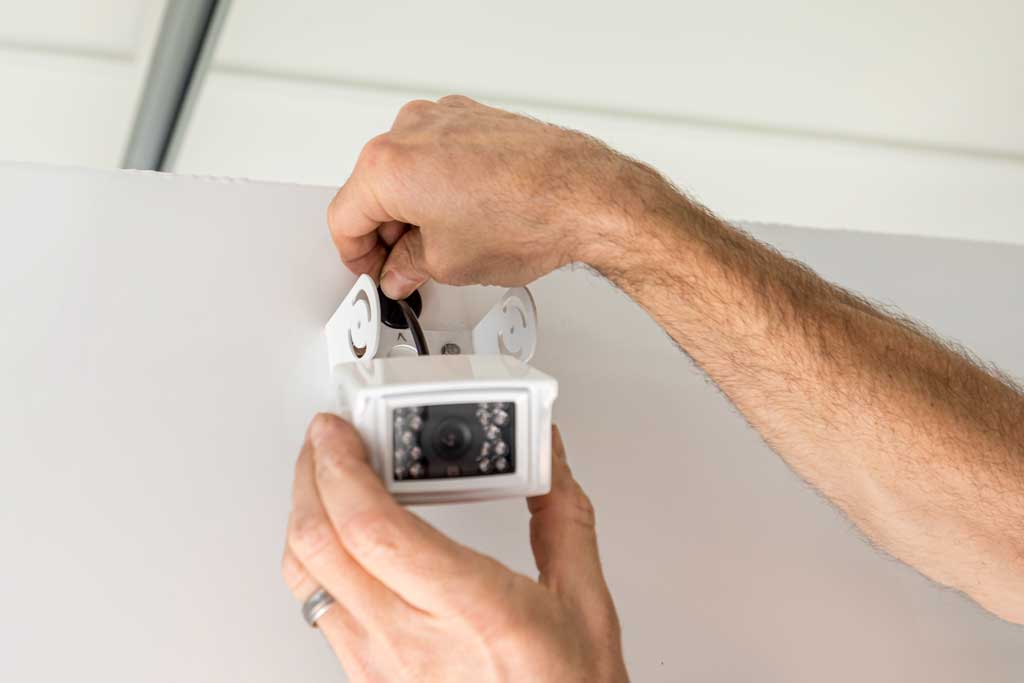


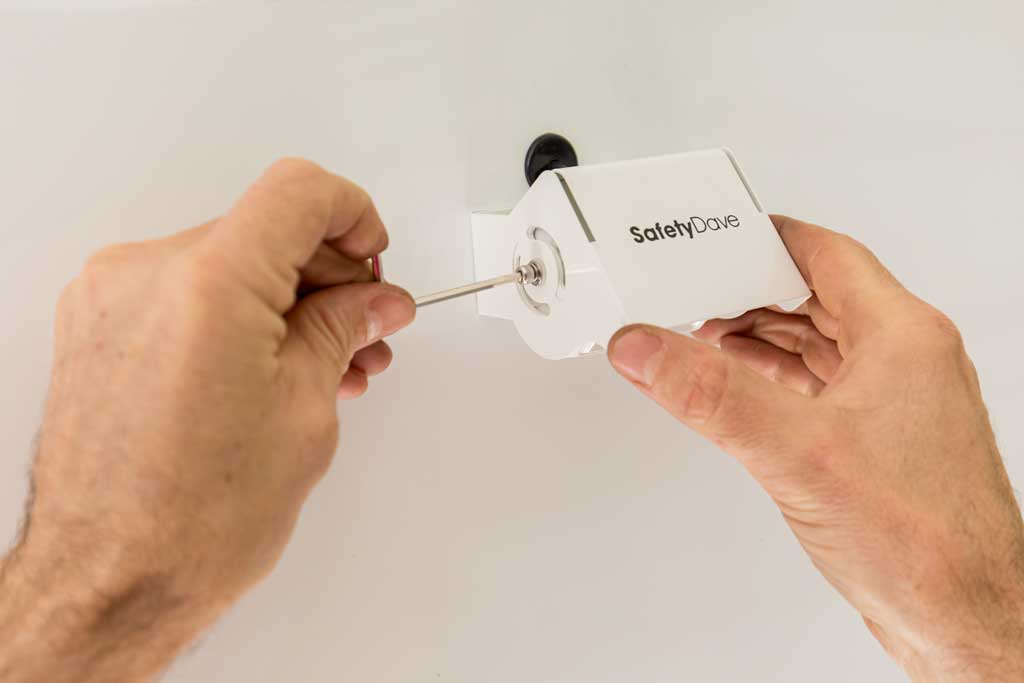


I chose to run the cabling from the camera down the inside of my canopy to under the sub-floor. This required another hole to be drilled with the step-drill. The cable from the camera was connected to another longer cable to get the camera feed to the monitor.
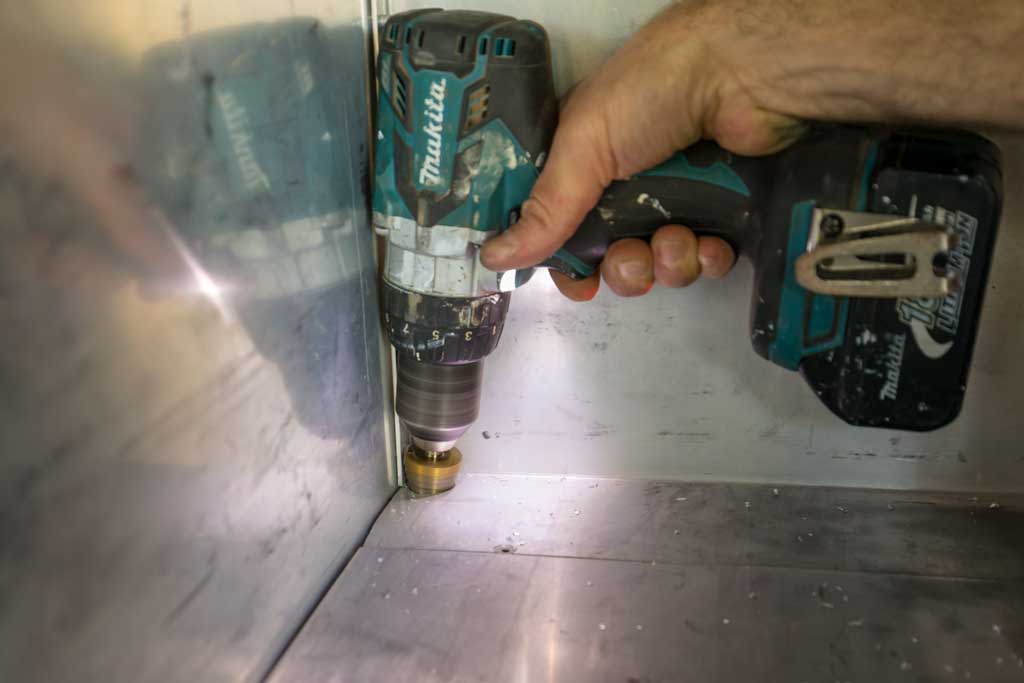


This cabling was protected by running it inside 10mm split-tube convolute. This was then zip-tied to a couple of self-adhesive zip-tie mounts that I had stuck inside the canopy.
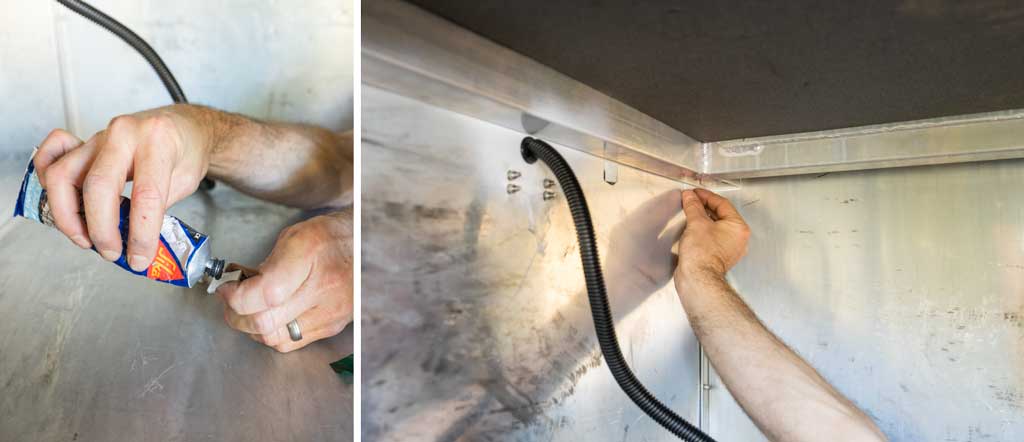


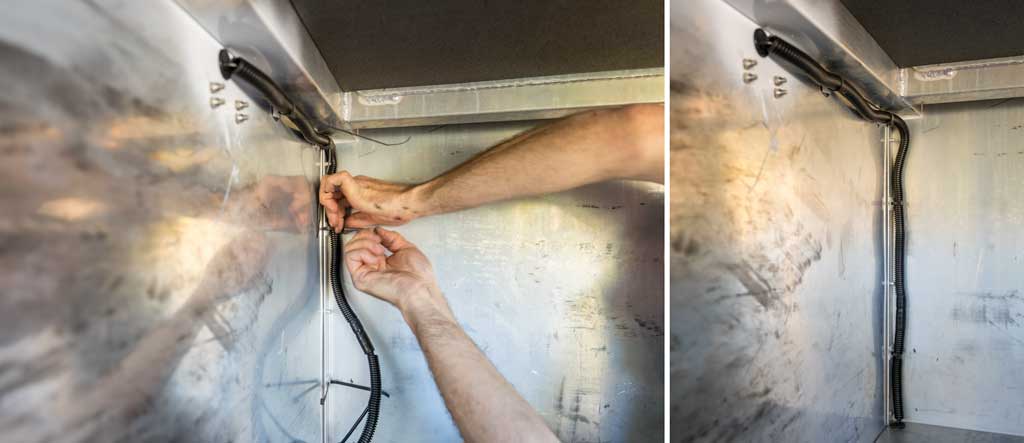


With the cable through the sub-floor, it was run under my drawers to an existing hole in the canopy floor. This hole was enlarged to take a bigger cable gland so both cables could pass through and be sealed. All cabling was again run through 10mm split-tube.
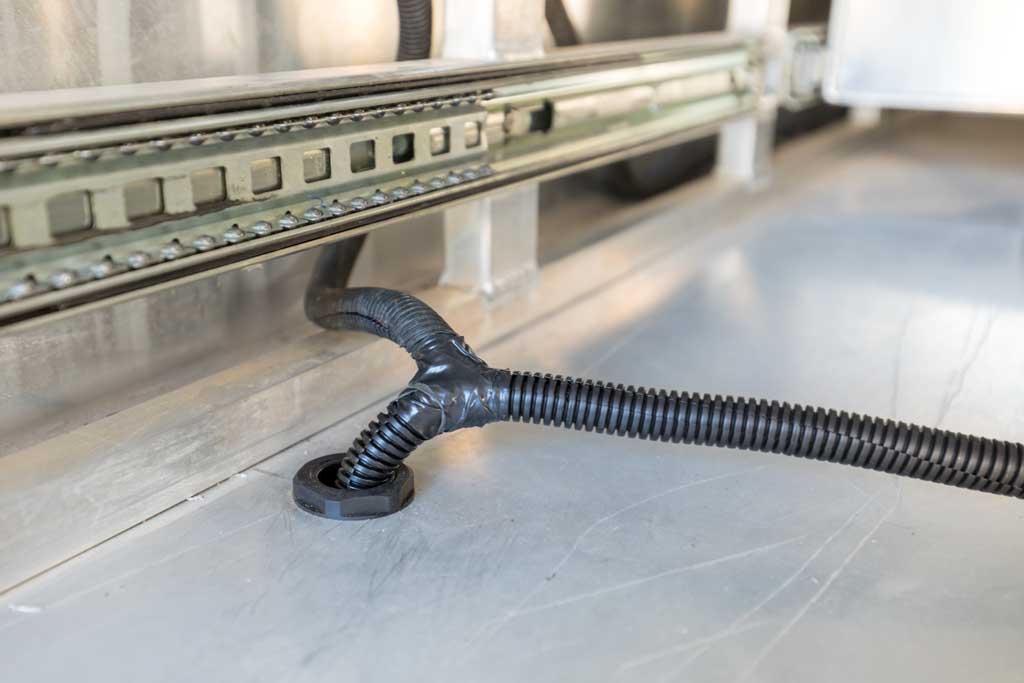


The remaining length of cable was protected by split-tubing and run along the chassis rail following existing cables. A grommet was found in the floor under the passenger seat.
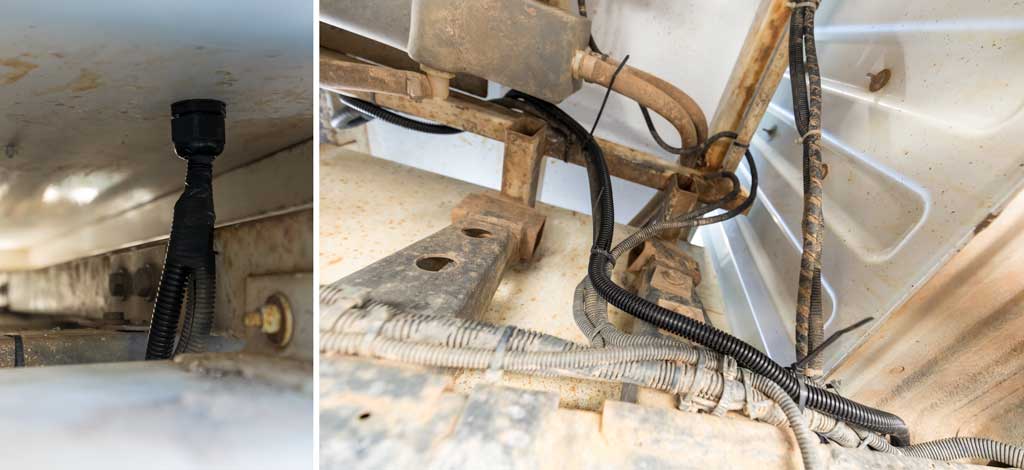


A small hole was drilled in the grommet and the cable passed through to the inside of the cabin. Sikaflex was used to seal the grommet to eliminate the ingress of dust and water into the cab.



The lower door trim was removed and the cable was run along underneath the carpet to the firewall before the interior trim panels were replaced. With the cabling through to the dash, it was now time to mount the monitor.
INSTALLING THE MONITOR
The factory rear-vision mirror was removed first, as this was going to provide the mounting point for the RAM ball mount. The overhead console required removal as well to allow for the cabling to be run inside the hood lining.
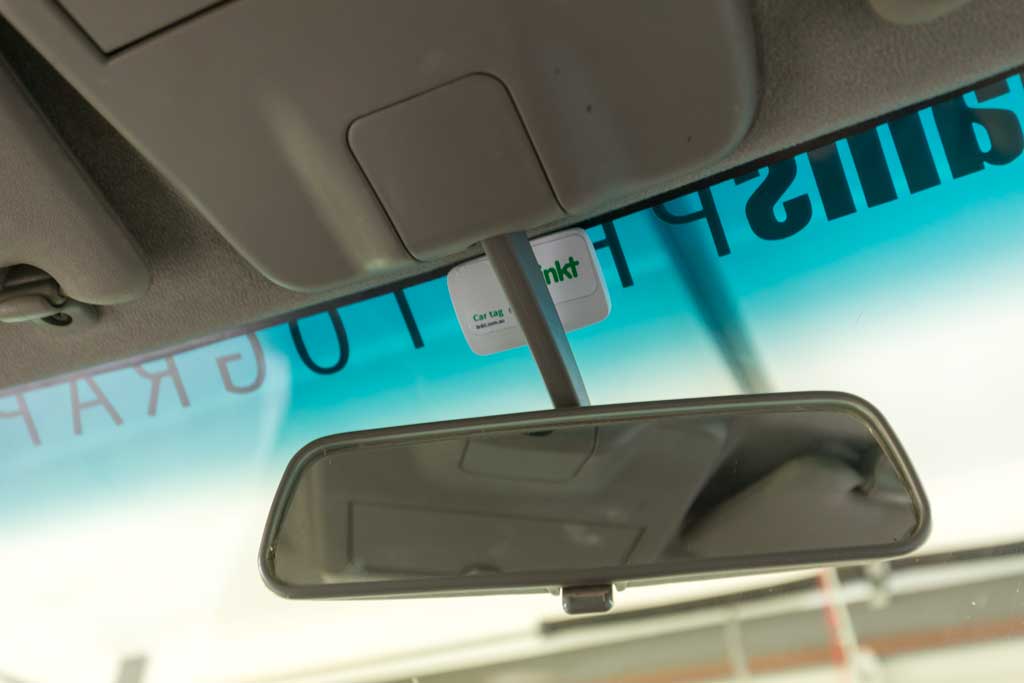


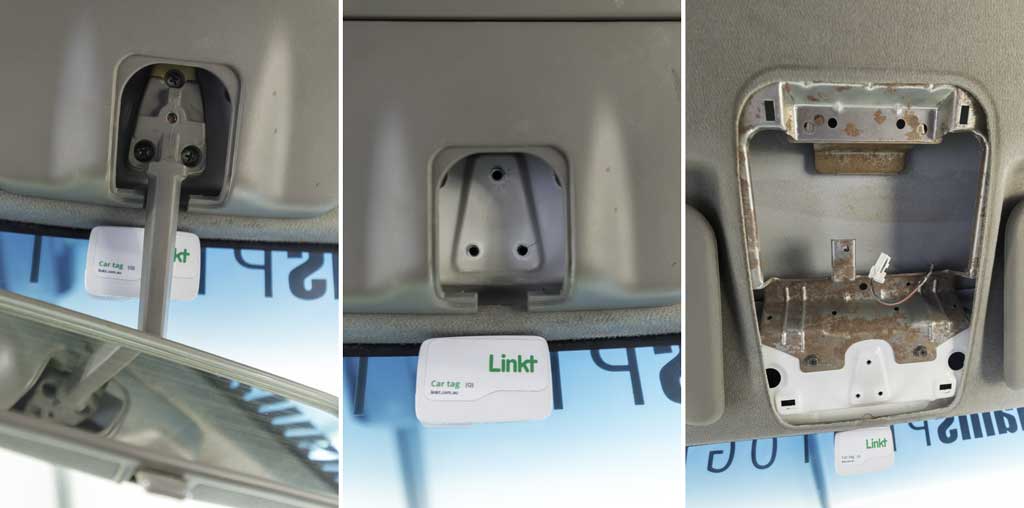


To get under the hood lining, the driver’s side sun visor and A-pillar trim and door trim also needed to be removed. With this all now removed, the monitor extension cable can be run under the hood lining and down the A-pillar to behind the dash.
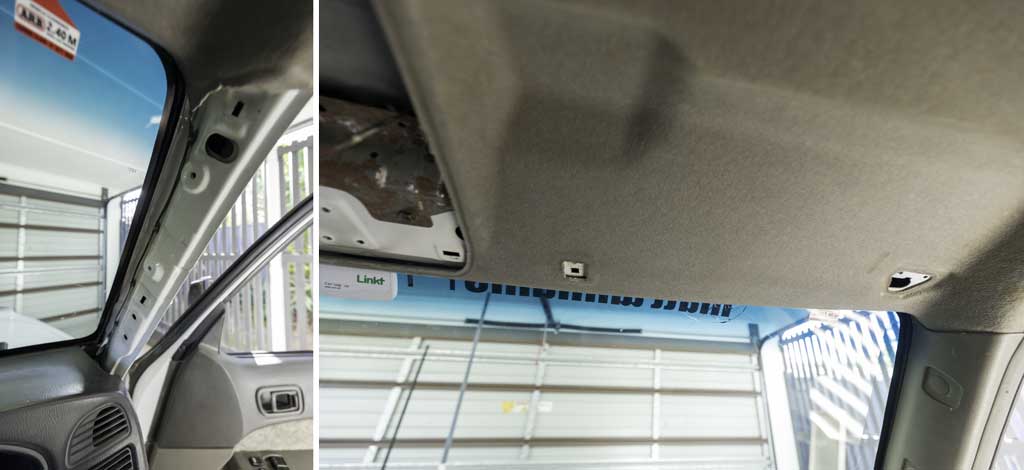


The RAM ball mount that was mounted to the roof needed to be modified to suit the existing holes of the mirror mount. To do this, I used the factory mount and positioned it on the RAM mount using a single screw that was aligned with one of the holes already in the RAM mount.
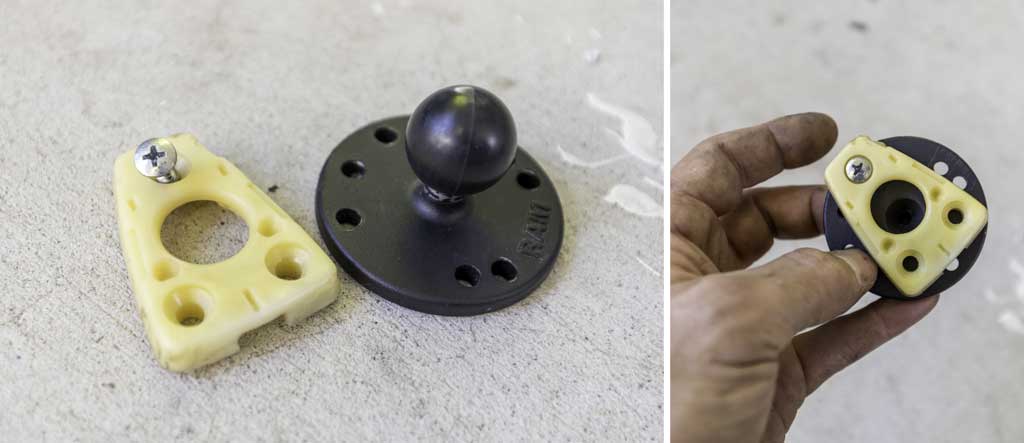


I then marked where the other two holes needed to be drilled on the mount before drilling them with a 6mm bit. To suit the factory screws, the three holes needed to be countersunk prior to fitting into the vehicle.



Using the original screws, the RAM ball mount was fitted up to the factory holes in the roof. The RAM arm was then attached to the ball mount.
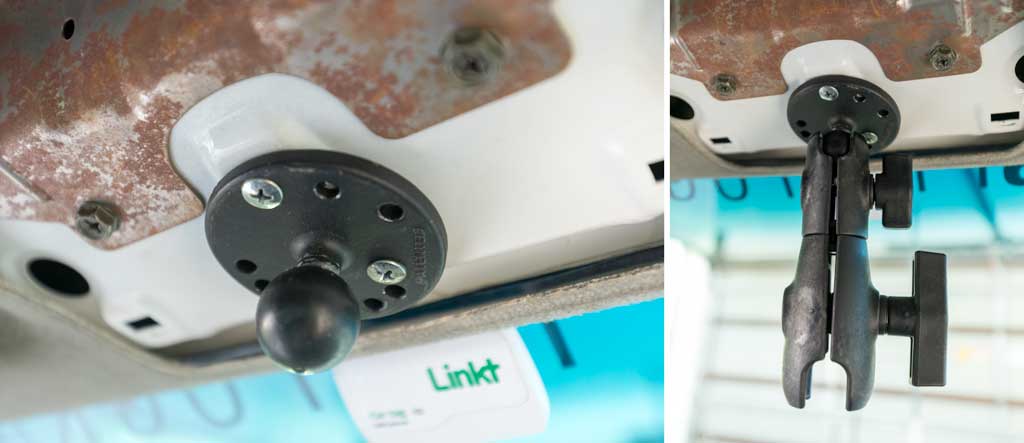


The overhead console can now be refitted. Attach the RAM ball with T-slot to the monitor and attach to the arm. The monitor can now be positioned to suit the driver.
The monitor cable is attached to the extension cable and run behind the hood lining, down the A-pillar to behind the dash. Once this has been done, the trims and sun visor can be re-attached as well.



POWERING UP YOUR REAR VISION SYSTEM
All that is now left to do is wire up the power loom and attach the camera and monitor cables.
When powering up a system like this, it is recommended to use an ignition power source ie. It only has power when the ignition, or the very least, accessories is on. In most cases, you will go directly to the back of your cigarette lighter for accessory power.
In my case, all of my cigarette sockets have been wired to constant 12V power. So unfortunately, that was out of the question.
Due to my lack of auto electrical expertise, the only other thing that I knew that had accessory power was my stereo. So this meant I had to pull apart my dash to find the power supply for it.
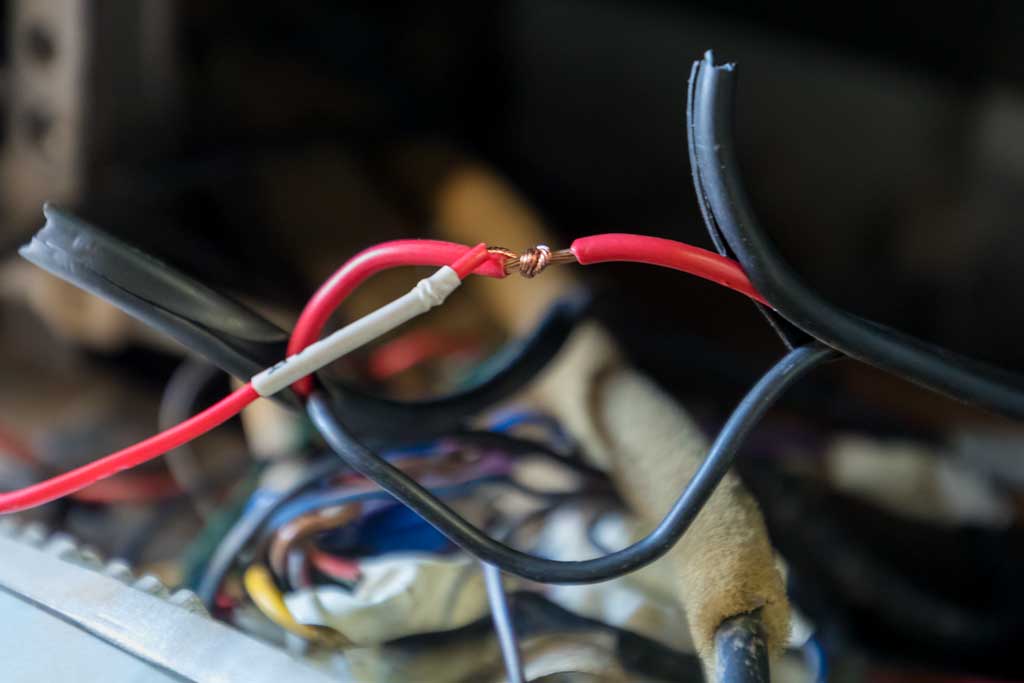


After using my multimeter to make sure I had the correct wire, I stripped back a section of wire, wrapped the positive wire from my power loom around it and soldered it in place. I then wrapped electrical tape around it for insulation.
The earth wire from the loom was run to the same earth point for the stereo. Now it was time to turn the keys on to see if I had got it right. The moment of truth!
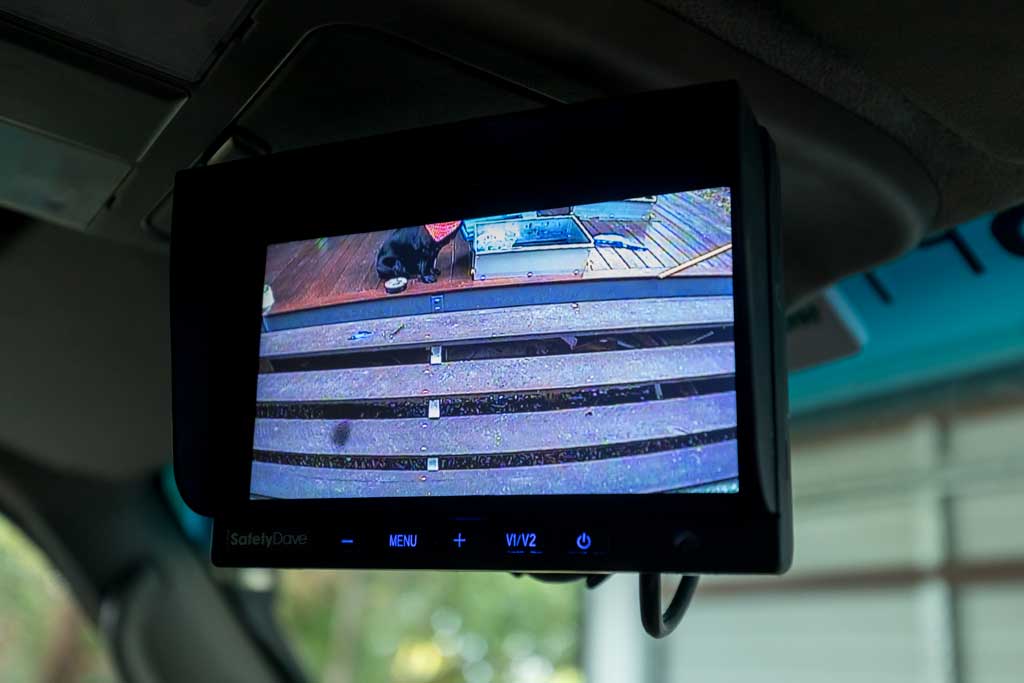


Thankfully, due to the easy install nature of the project, the monitor fired up straight away.
The monitor has adjustments for brightness, volume, saturation and hue, so you can set the picture style up just how you want it.
LAST BUT NOT LEAST
Finally, when it’s all said and done, the last thing you need to do is adjust the camera viewing angle and fit off the remaining four screws. This is best done with an assistant to save you having to run from the back to the front all the time.



So now, with the camera installed, it should not only make it easier to reverse park the ute when it does venture into the city, but those pesky Eucalypts might also have a fighting chance of making it to maturity.
What do you think Mez?
About the Author:
Hi, I’m Matt. I camp, four-wheel drive, explore the outdoors and get paid to take photos.
I’m happiest when I’m doing all four at once.
Occasionally, I’ll even tap out a couple of words on my keyboard.



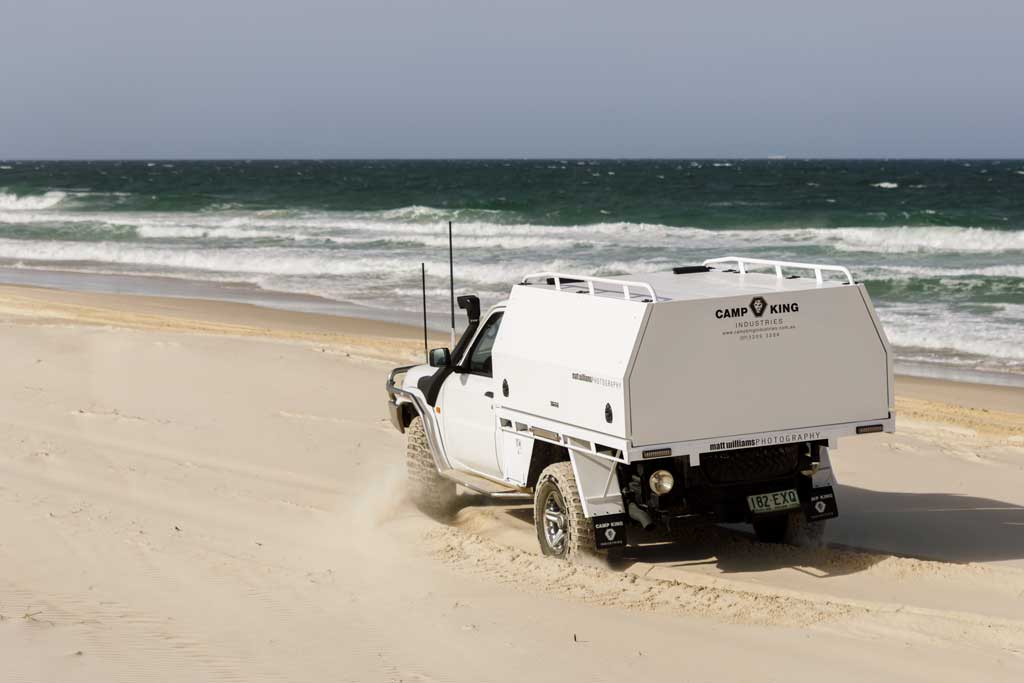
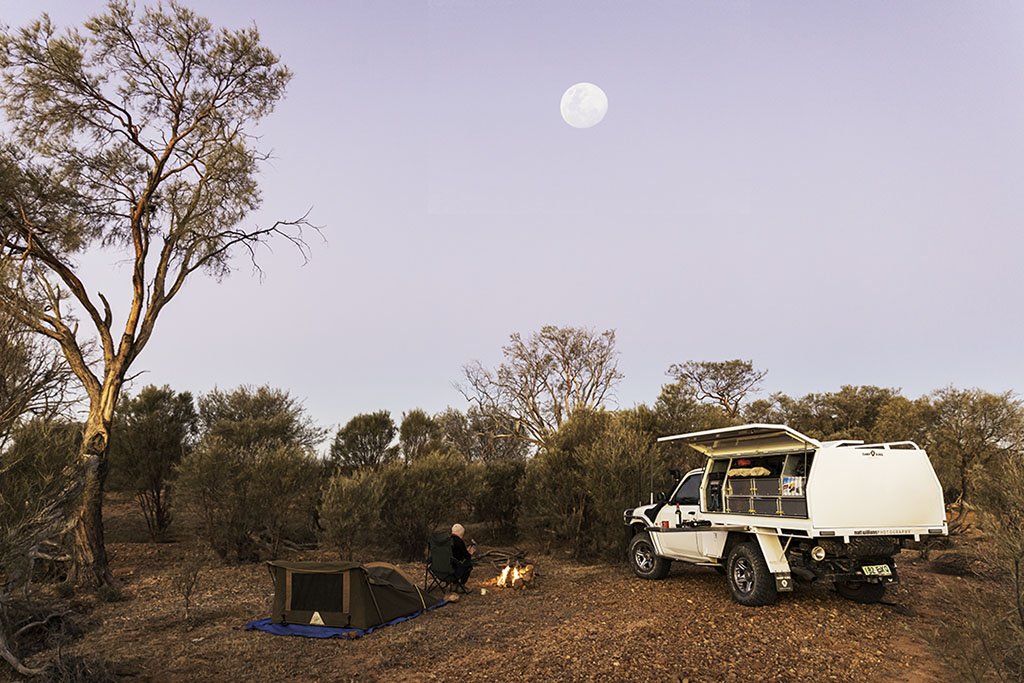
Leave a Reply